La Digue
Destination - Indian OceanCruising in the Seychelles is a dream. Sublime underwater life, an exceptional welcome from a charming population, and above all, 115 coral or granite islands. But if you could only visit one of them? It would inevitably be La Digue!
Logbook
The Seychelles include some of the most beautiful islands in the Indian Ocean, or even on the planet: they are even more beautiful than you can imagine in your wildest dreams... This archipelago is a postcard in itself: the fauna and flora are jealously protected by the authorities, and the result is some sublime scenery and underwater life of unequalled richness... There is no need to say anything more about its ecological wonders, the splendour of its beaches and lagoons, or the extraordinary possibilities it offers divers. The Seychelles are a real paradise. And in this paradise, there is La Digue!
La Digue is a small island situated 25 miles north-east of Mahé. Its particularity is that it has no cars (apart from a few pick-ups) and is visited either on a hired bicycle, or...in an ox cart.
A coast road leads south and will allow you to discover the cemetery of the former colonists, a few hundred metres from the village. A few peaceful horses graze between the ruined tombs, which are now buried under the vegetation. Close by, a boatyard builds and repairs the local wooden boats, following traditional methods. Then a kilometre further on, you enter the Union plantation nature reserve. Here the coprah oil, extracted from the coconuts, is processed, and vanilla is cultivated. In this huge area, a typical dwelling and a few houses covered in palms show the island’s former housing. You can then visit the most famous site on La Digue: the Source d’Argent cove. Protected by the large coral reef, the turquoise water touches a succession of small beaches, separated by enormous blocks of rock. Their granite mass, with its grey oxidation, looks like an imposing herd of elephants. Whilst paddling in the warm water, you will not get bored of contemplating this subtle natural combination, an idyllic vision of a tropical paradise just above the surface of the ocean.
Later, you can climb the steep road and path to reach Bellevue, to contemplate the majestic panorama of a part of the archipelago, from the island’s ‘summit’.
Finally, you can come back down to Grand'Anse, the only bay on the east coast which is accessible by road. This big beach of fine sand, hardly troubled by a light undertow, is dominated by huge beach oaks and coconut trees.
North of Grand'Anse, two other small bays open up: Petite Anse and Anse Cocos. They are not busy, as they are only accessible by boat, and are separated by rocky headlands, whose rocks have to be given a wide berth. A pile of granite with exuberant shapes, foliage dying on the edge of an almost deserted beach – these anchorages are amongst the most beautiful of all the volcanic islands of the Seychelles (and therefore the world!!!).
Itinerary
There is not really a typical itinerary in the Seychelles, as the anchorages are only a few miles from each other, and you can go from one to the other as you wish. Mahé is the archipelago’s main island, the one where you will land. Certain charter companies are based on Mahé, others are on its neighbour, Praslin. Once you have picked up your catamaran, all you have to do is leave to discover the wonders on offer to you.
Although we have a preference for La Digue, you must not missPraslin, Silhouette and two dozen small islands, each more beautiful than the last, includingCocos, Grande and Petite Sœur, Cousin, Curieuse and St Pierre…
Beware, certain anchorages have to be paid for: this tax goes into a fund assigned to the environment ministry, which works to maintain the islands in the most natural condition possible. The Seychelles’ charm is the purity of the environment; it must not be spoiled. The taxes are only due in the national parks…
Practical info
Getting there:
The Seychelles are easily accessible from most European capitals, and the enormous advantage is that there is very little time difference (+2h in summer, +3h in winter, with respect to Paris).
Weather:
The Seychelles are outside the hurricane area... Sailing here is pleasant all the year round.
Dry season: (mid-May to October): E/SE trade winds, maximum wind strength in July, August (20 – 25 knots). Less frequent squalls.
Warm, wet season: (January to March): NE ‘monsoon’ wind, strength variable. Frequent squalls.
Intermediate seasons: (November and December): winds (light to moderate) variable in direction from SE to NW – (April to mid-May) winds (light to moderate) variable in direction, from N to SE.
Air temperature from 29° to 32°, according to the season. Water temperature from 27° to 29°.
Formalities:
For EU and North American citizens: valid passport.
Money:
Seychelles Rupee (+/-0,06 euros). But you can also play in Euros in most places.
Check the website of the central bank of Seychelles for daily change: www.cbs.sc
Destinations offered by
View all the destinations
 Discover the 2025 winners!
Discover the 2025 winners! 
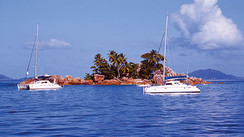
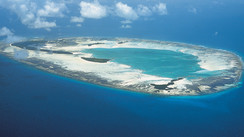
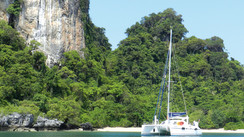
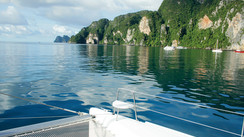
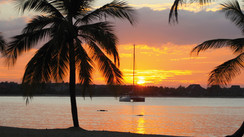
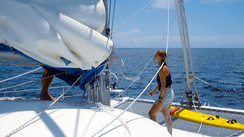







What readers think
Post a comment
No comments to show.